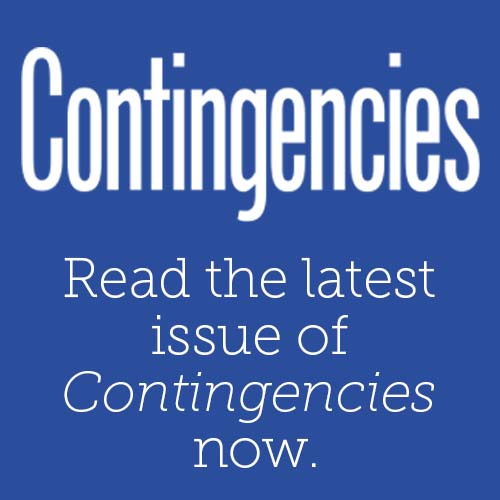Guidelines for Developing Practice Notes
(As adopted by the Board of Directors September 25, 2006)
The purpose of practice notes is to provide information to actuaries on current or emerging practices in which their peers are engaged. They are intended to supplement the available actuarial literature, especially where the practices addressed are subject to evolving technology, recently adopted external requirements, or advances in actuarial science or other applicable disciplines (e.g., economics, statistics, or enterprise risk management). Practice notes are not interpretations of actuarial standards of practice nor are they meant to be a codification of generally accepted actuarial practice. Actuaries are not in any way bound to comply with practice notes or to conform their work to the practices described in practice notes.
A practice note is usually written by a group of actuaries who have expertise in the type of practice covered by the practice note. The procedural guidelines set forth below are intended to assist Academy officers, committees, and staff in developing and maintaining practice notes that are effective and timely. These guidelines are designed to promote consistency of quality and style and to ensure that the practices identified in practice notes conform to the actuarial standards of practice and existing legal and regulatory requirements. Nothing in these guidelines is intended to prevent other actuarial organizations from publishing educational materials on current actuarial practices to assist practicing actuaries.
The purpose of practice notes is to provide information to actuaries on current or emerging practices in which their peers are engaged. They are intended to supplement the available actuarial literature, especially where the practices addressed are subject to evolving technology, recently adopted external requirements, or advances in actuarial science or other applicable disciplines (e.g., economics, statistics, or enterprise risk management). Practice notes are not interpretations of actuarial standards of practice nor are they meant to be a codification of generally accepted actuarial practice. Actuaries are not in any way bound to comply with practice notes or to conform their work to the practices described in practice notes.
A practice note is usually written by a group of actuaries who have expertise in the type of practice covered by the practice note. The procedural guidelines set forth below are intended to assist Academy officers, committees, and staff in developing and maintaining practice notes that are effective and timely. These guidelines are designed to promote consistency of quality and style and to ensure that the practices identified in practice notes conform to the actuarial standards of practice and existing legal and regulatory requirements. Nothing in these guidelines is intended to prevent other actuarial organizations from publishing educational materials on current actuarial practices to assist practicing actuaries.
- Practice Council Oversight: Practice notes are published by the Practice Councils of the Academy with support from Academy officers, staff, committees, task forces and work groups. Committees or task forces of other actuarial organizations and individual actuaries may also assist with the development of practice notes.
- Initiation of Practice Note Development: Any actuary, other individual or entity may request that the development or revision of a practice note be considered. Such requests may be directed to the appropriate Practice Council for evaluation of need, approval and implementation. The Practice Councils have primary responsibility for monitoring the need for new practice notes and deciding when existing notes should be modified or withdrawn.
- Authority to Proceed: If a Practice Council determines that a new or revised practice note is desirable in a particular area of practice, the Practice Council Chairperson (“PC Chair”) requests that an appropriate committee or task force within the profession develop the practice note. If no such committee or task force exists, the PC Chair is authorized to establish one, consistent with Academy Bylaws.
- Development Procedures: Practice notes are generally developed by a committee or task force and are identified as a product of that group. It may be appropriate, however, to involve other actuaries believed by the committee or task force to have pertinent expertise or experience. From time to time, it may also be appropriate to solicit the input of nonactuaries. When and how such additional input is solicited is at the discretion of the committee chair with concurrence of the PC Chair.
- Content of Practice Notes: A Practice note may describe one or more methodologies within the known or anticipated range of practices. It would clearly indicate, if applicable, that it covers only certain approaches and that there are, or may be, other methods used in practice. The practice note should not advocate a particular approach, but rather, describe it. To the extent that there are legitimate differences of opinion among practitioners concerning a particular practice, the practice note should describe the practice and indicate the existence of the difference of opinion; however in no event shall a practice note describe practices that the committee knows to be in use but collectively considers to be inappropriate.
- Required Disclosures: Each practice note should begin with a paragraph as follows: This practice note is not a promulgation of the Actuarial Standards Board, is not an actuarial standard of practice, is not binding upon any actuary and is not a definitive statement as to what constitutes generally accepted practice in the area under discussion. Events occurring subsequent to this publication of the practice note may make the practices described in this practice note irrelevant or obsolete. Additionally, the paragraph should identify the committee within the Academy that developed the practice note. Blanket sponsorship by the Academy should not be stated or implied.
- Consensus: The committee chairperson should seek a general consensus of the committee members concerning the content of the practice note. If there is substantial lack of consensus, the committee chairperson should so advise the PC Chair and seek further instruction on how to proceed.
- Review Procedures: No practice note may be released without appropriate peer review. At a minimum, the PC Chair and one or more of his or her designees should review practice notes. If the PC Chair is involved in drafting the document, he or she shall designate two Council members who were not part of drafting the document for peer review. All practice notes must receive legal and editorial review by the Academy staff to confirm legality and consistency with standards of practice, other practice notes, and Academy policies.
- Final Approval: The ultimate decision to issue a practice note rests with the PC Chair. When the development of a practice note involves issues of major significance, the PC Chair should consult with the Academy Executive Director or President before releasing the practice note.
- Production and Distribution: Academy staff handles production and distribution of final practice notes. Distribution may vary depending on the audience for the notes.
- Periodic Review: The PC Chair will initiate a Practice Council review of existing practice notes on a regular basis for relevance, purpose, and completeness, and will arrange for the practice notes to be updated or withdrawn as the Practice Council determines is appropriate.
Share







